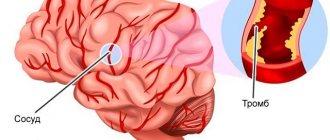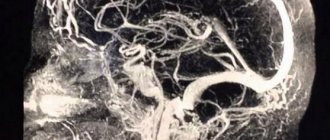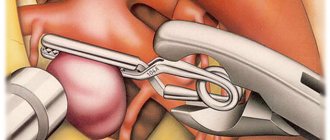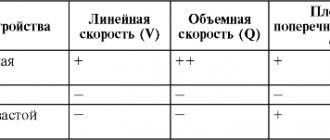Poor circulation can cause unpleasant symptoms such as pain, muscle spasms, numbness, digestive problems, and cold hands or feet (, , , , ).
In addition to those with poor circulation, athletes and physically active people may want to increase circulation to improve physical performance and recovery.
Although circulation problems are often treated with medications, eating certain foods can also improve blood flow.
Here are 14 of the best foods to improve blood circulation.
Products to improve blood circulation in the legs, pelvis, limbs, brain, etc.
Cayenne pepper
Cayenne pepper has a fiery taste due to a phytochemical it contains called capsaicin.
Capsaicin promotes blood flow to tissues by lowering blood pressure and stimulating the release of nitric oxide and other vasodilatory compounds ().
Vasodilators allow blood to flow more easily through your veins and arteries by relaxing the tiny muscles found in the walls of these blood vessels.
Research shows that consuming cayenne pepper increases blood circulation, improves the strength of blood vessels, and reduces the formation of cholesterol plaques in your arteries ().
Moreover, these hot peppers are often included in pain-relieving creams because they can stimulate blood circulation in the affected areas ().
Carbohydrates for the central nervous system
If proteins are the building material for neurons and the substrate for the synthesis of neurotransmitters, then carbohydrates are the energy base. One of the final monosaccharides that is formed during the breakdown of complex carbohydrates is glucose. It is necessary for the brain to obtain energy. For this reason, carbohydrates must be present in the diet, but in reasonable quantities.
However, professor-neurologist from the USA David Perlmutter does not agree with this official opinion of nutritionists and dietitians. He believes that the human body does not need carbohydrates at all. And there is a good explanation for this: metabolism is designed in such a way that, in conditions of a shortage of available carbohydrates, the body can independently synthesize them from existing reserves of fats and proteins. This chemical process is called gluconeogenesis.
David Perlmutter suggests limiting the consumption of carbohydrate foods as much as possible, because he believes that they “kill” the brain. Whether to agree with this opinion or not is a personal matter for everyone, because it has not yet been scientifically proven. Official medicine believes that it is necessary to take carbohydrates with food.
Healthy carbohydrates recognized by nutritionists today include sugars contained in:
- vegetables (asparagus, tomatoes, sweet peppers, zucchini);
- greens (green salad, onions, parsley, dill);
- moderately sweet or unsweetened fruits (apples, lemons, avocados);
- berries (strawberries, raspberries, blackberries, blueberries, cranberries).
Vegetables, fruits and berries are also useful for their high content of non-starchy polysaccharides, the so-called ballast compounds (fiber, pectin), which normalize intestinal motility, adsorb harmful and toxic substances in its lumen, and restore intestinal microflora. The dark-colored berries are rich in antioxidants, which protect lipids in cell walls from peroxidation and free radical damage.
Pomegranate
Pomegranates are a juicy, sweet fruit particularly rich in polyphenolic antioxidants and nitrates, which are powerful vasodilators (vasodilators).
Consuming pomegranate in the form of juice, raw fruit, or supplements can improve blood circulation and oxygenation of muscle tissue, which can especially help physically active people.
In a study of 19 physically active people, it was found that consuming 1,000 mg of pomegranate extract 30 minutes before exercise increased circulation, blood vessel diameter, and physical performance ().
Another study found that consuming 500 ml of pomegranate juice daily during or before strength training reduced muscle soreness, damage and inflammation in elite weightlifters ().
Onion
Onions are an excellent source of flavonoid antioxidants, which benefit heart health.
This vegetable improves blood circulation by helping your arteries and veins dilate as blood flow increases.
In a 30-day study of 23 men who received 4.3 grams of onion extract daily, there was a significant improvement in blood circulation and arterial dilation after eating ().
Onions also have anti-inflammatory properties that can improve circulation and heart health by reducing inflammation in the veins and arteries ().
Nicotinic acid preparations
Nicotinic acid, or vitamin PP, dilates capillaries, but does not have a significant effect on large vessels. In some cases, drugs based on it are prescribed for cerebral circulation disorders. They reduce the fragility of the walls of blood vessels due to their ability to reduce the level of bad cholesterol. In case of impaired blood supply to the brain, Nikoshpan, Acipimox, Enduratin are prescribed.
Nicotinic acid improves capillary blood flow
Self-treatment with nicotinic acid can lead to serious consequences, so you should only undergo a course of therapy under the supervision of a doctor. Treatment consists of several courses of injections, then proceed to tablet forms.
Cinnamon
Cinnamon is a warming spice that has many benefits, including improving blood circulation.
In animal studies, cinnamon improved blood vessel dilation and blood flow in the coronary artery, which supplies blood to the heart.
Rats given 200 mg/kg of cinnamon bark extract daily for eight weeks showed improvements in cardiac function and coronary artery blood flow after exhaustive exercise compared to rats in the control group ().
Additionally, research shows that cinnamon can effectively lower blood pressure in people by relaxing blood vessels. This improves blood circulation, and keeps your heart healthy ().
In a study of 59 people with type 2 diabetes, 1,200 mg of cinnamon per day reduced systolic blood pressure (top reading) by an average of 3.4 mmHg. Art. in 12 weeks ().
Causes of cerebral circulatory disorders
The brain is the main organ of the central nervous system; it consists of neurons united by synaptic connections. By interacting with each other, neurons form chains of electrical impulses that regulate the activity of the body1.
The functioning of the brain requires large amounts of energy, which it receives through the bloodstream. Blood enters the brain through four arteries - two carotid and two vertebral, and outflow - through two jugular veins. With an average weight of 2% of the total body weight, the brain at rest consumes 15% of all blood circulating in the body, 20-25% of the oxygen received during respiration, and up to 50% of all glucose reserves entering the blood from the liver2.
Blood supply to the brain and blood circulation within the organ play a crucial role in its functioning, since without the provision and distribution of energy, oxygen, vitamins and amino acids entering the bloodstream, neurons cannot grow and divide. 85% of all pathologies associated with brain function are due to circulatory disorders3. Improving blood circulation in the brain is necessary for any pathologies and conditions that can lead to vasoconstriction or impaired blood circulation within the organ.
Pathological causes of vasoconstriction and their consequences:
- Arterial hypertension. In response to increased blood pressure, the walls of blood vessels spasm, and additional layers grow on the inside of the vessels. Thickening impairs blood flow4,5,6.
– Hypercholesterolemia. Violation of lipid metabolism in the direction of increasing low-density lipoproteins (“bad cholesterol”) leads to the formation of atherosclerotic plaques on the walls of blood vessels. Plaques completely or partially block a vessel, disrupting blood circulation, including in the brain7.
– Thrombosis. The formation of a thrombus (a clot of coagulated blood) can have various origins, as a rule, these are damage and cracks in the walls of blood vessels. Blood clots lead to blockage of blood vessels and increase blood viscosity, impairing blood circulation to the brain8,9.
- Diabetes. With increased levels of glucose in the blood, thickening of the vascular walls is stimulated, which leads to disruption of the natural flow of blood, and blood supply to the brain is disrupted10,11.
– Osteochondrosis of intervertebral discs. The vertebral artery is one of the main vessels through which blood flows to the brain. With pathology of cartilage tissue, intervertebral discs compress this artery, disrupting the blood supply to the brain12,13.
- Cardiopsychoneurosis. This is a complex of disorders of the cardiovascular system that can lead to disturbances in blood supply and circulation in various organs, including the brain14,15.
Impaired blood circulation in the brain can result from traumatic brain injuries, including concussions and bruises, as well as traumatic injuries to the spine, accompanied by impaired blood flow.
Neurocirculatory dystonia in the context of cerebral circulatory disorders is considered separately. The difficulty is that this disease often does not have an acute phase, and its main symptoms without targeted diagnosis can be explained by a number of typical pathologies such as chronic fatigue syndrome16. In other words, many simply do not know that they have this disease (sometimes called a syndrome in the medical literature).
Symptoms of neurocirculatory dystonia are nervousness, increased fatigue, sleep disturbances, weakness, impaired cognitive function, and subsequently palpitations, cardialgia, shortness of breath, and blood pressure disorders. In the future, it leads to arrhythmia, tachycardia, and chronic vascular insufficiency. All these symptoms are explained, among other things, by impaired blood circulation in the brain17.
Reasons for the development of neurocirculatory dystonia18:
– genetic predisposition;
– psycho-emotional stress;
– lack of sleep (inconsistency with circadian rhythms);
– lack of physical activity;
– unbalanced diet, obesity;
– alcohol abuse, smoking.
That is, lifestyle directly affects the development of neurocirculatory dystonia, which leads to chronic cerebral circulatory disorders. Under conditions of lack of oxygen and nutrients, the rate of formation of neurons decreases, connections between control departments, as well as the transmission and inhibition of nerve impulses within the central nervous system are disrupted.
As a result, memory, concentration, reaction and coordination of movements deteriorate, constant fatigue and drowsiness are observed, and performance drops to 50%19. This condition can lead to massive death of brain cells and the appearance of local foci of necrosis. That’s why improving blood circulation in the brain is vitally important; let’s look at how to do it point by point.
Garlic
Garlic is well known for its beneficial effects on circulation and heart health.
Research shows that garlic—particularly its sulfur compounds, which include allicin—can increase tissue circulation and lower blood pressure by relaxing blood vessels.
In fact, diets high in garlic are associated with better flow-mediated vasodilation, an indicator of circulatory efficiency.
In a study of 42 people with coronary artery disease, those who consumed garlic powder tablets containing 1,200 mg of allicin twice daily for three months experienced a 50% improvement in arm artery blood flow compared to the placebo group () .
What will only harm
It is useful to know which foods improve cerebral circulation, but it is also recommended to study the list of harmful components for this process. First of all, it's alcohol. It should not be used at all.
Any quantity and strength negatively affects the health and functioning of the brain. Every holiday with alcohol leads to the death of millions of brain cells. This does not take into account the effects on other organs, such as the liver, kidneys, stomach, heart. In addition, you should exclude from the diet:
- Marinades and homemade preparations. They usually lead to high blood pressure due to the high content of salt and other preservatives.
- Fatty food. Leads to the formation of cholesterol and plaques that clog blood vessels. In addition, fatty foods slow down the functioning of all neurons in the brain, which negatively affects mental performance.
- Any products with a high content of “chemicals”. All unnatural dyes, sweeteners, and preservatives negatively affect the quality of blood.
In addition, you should avoid any type of fast food and processed meat.
Fatty fish
Fatty fish such as salmon and mackerel are excellent sources of omega-3 fatty acids.
These fats are especially beneficial for circulation as they promote the release of nitric oxide, which dilates blood vessels and increases blood flow ().
Omega-3 fats also help inhibit the clumping of platelets in your blood, a process that can lead to blood clot formation ().
Moreover, fish oil supplements are associated with a reduction in high blood pressure and improved skeletal muscle circulation during and after exercise.
For example, in a study of 10 healthy men, high doses of fish oil—4.2 grams per day for four weeks—significantly improved blood flow to the legs after exercise ().
Other nutritional principles
Not only the diet itself is important for cerebrovascular accidents, but also the principles of proper food consumption. You need to eat often and in small portions. For the brain to work efficiently, you should not overload your stomach. This also applies to various batteries. If you combine different forms of protein, the processing and absorption time of the product increases.
It is important to prepare any product correctly. The ideal option is to steam or boil. If possible, it is better to eat raw vegetables and fruits. For better digestibility, salads must be seasoned with oil - olive or hemp. Any fried foods increase the content of negative cholesterol and accelerate the formation of blood clots in blood vessels.
Beet
Many athletes drink beet juice or take beet powder to improve physical performance.
This is because beets contain high levels of nitrates, which your body converts into nitric oxide. Nitric oxide relaxes blood vessels and increases blood flow to muscle tissue.
Beet juice supplements improve oxygen flow to muscle tissue, stimulate circulation, and increase nitric oxide levels - all of which can improve physical performance ().
In addition to helping athletes, beets improve blood circulation in older people with circulatory problems.
In a study of 12 older adults, those who drank 140 ml of fresh beet juice per day experienced significant reductions in blood pressure, clotting time and blood vessel inflammation, compared to those who consumed a placebo ().
Turmeric
Improving blood circulation is one of the many benefits of turmeric.
In fact, both Ayurvedic and Traditional Chinese Medicine have used turmeric to dilate blood vessels and improve circulation since ancient times ().
Research shows that a compound found in turmeric called curcumin helps increase nitric oxide production, reduce oxidative stress, and reduce inflammation.
In a study of 39 people, taking 2,000 mg of curcumin per day for 12 weeks resulted in a 37% increase in blood flow in the forearm and a 36% increase in blood flow in the upper arm ().
Green leafy vegetables
Green leafy vegetables such as spinach and greens are rich in nitrates, which your body converts into nitric oxide, a powerful vasodilator.
Eating nitrate-rich foods can help improve circulation by widening blood vessels and allowing your blood to flow more easily.
In a study of 27 people, those who consumed nitrate-rich (845 mg) spinach daily for seven days experienced significant improvements in blood pressure and circulation compared to the control group ().
What's more, studies have shown that people who eat a traditional Chinese diet, which includes nitrate-rich vegetables such as Chinese cabbage, have lower blood pressure and a significantly reduced risk of developing cardiovascular disease compared to those who eat a typical Western diet ( ).
Citrus fruit
Citrus fruits such as oranges, lemons and grapefruit are rich in antioxidants, including flavonoids.
Consuming flavonoid-rich citrus fruits can reduce inflammation in your body, which can reduce blood pressure and stiffness in your arteries while improving circulation and nitric oxide production ().
In a study of 31 people, those who drank 500 ml of orange juice per day for one week had significant improvements in artery dilation and significant reductions in inflammatory markers such as IL-6 and CRP compared to the control group ().
Additionally, regular consumption of citrus fruits, such as lemon and grapefruit, is associated with lower blood pressure and a reduced risk of stroke (,).
Walnuts
Walnuts are rich in beneficial compounds such as L-arginine, alpha lipoic acid and vitamin E, which stimulate the production of nitric oxide.
Eating walnuts may lower blood pressure, improve blood vessel function, and reduce inflammation, which may be especially beneficial for people with diabetes ().
People with diabetes often have circulatory problems and high blood pressure due to damage to blood vessels caused by uncontrolled blood sugar levels ().
In a study of 24 people with diabetes, those who consumed 56 grams of walnuts per day for eight weeks experienced significant improvements in blood flow compared to the control group ().
Balanced diet
Nutrition to improve blood circulation in the brain is based on several rules, the observance of which is mandatory. Then the diet will really help. This will be noticeable both in general well-being and in parameters of mental activity. Proper nutrition will keep all indicators normal, improve metabolism, and the effect is no less than that of taking medications. The sooner a person realizes the need to balance their diet, the greater the chance of maintaining a youthful brain. The main parameters of the body that you should pay attention to when creating a diet:
- Blood cholesterol level.
- Glucose level.
- Blood pressure during the day.
Already focusing on indicators, you need to choose or limit products.
- Do not overuse salt if you have high blood pressure.
- If your cholesterol is high, limit your intake of animal fat.
- Eat less fast carbohydrates (sweets and baked goods).
- Introduce into your diet foods that prevent increased blood clotting.
In addition, you will need to monitor your drinking regime. Be sure to drink at least 1.5 liters of water per day. It should be drinking, boiled or mineral water without gases, flavors and additives.
Tomatoes
Tomatoes may help reduce the activity of angiotensin-converting enzyme (ACE), which causes blood vessels to constrict to control blood pressure ().
Research shows that tomato extract works similarly to ACE inhibitors - dilates blood vessels and improves circulation.
Test-tube studies note that tomato extract may inhibit ACE, reduce inflammation, and inhibit platelet aggregation, which may improve blood circulation (, ).
Cold compresses and ice pack
When applying a cold compress, as a result of local cooling, a spasm of the blood vessels of the skin and internal organs adjacent to this area occurs, which is accompanied by a limitation of inflammation and traumatic swelling of the tissues, and a decrease in bleeding. Wet cold compresses (lotions) are used in the first hours for bruises, nosebleeds, hemorrhoids, and high fever. In this case, a piece of soft cloth rolled up in several layers, moistened with cold water, is applied to the corresponding area - forehead, bridge of the nose, etc. Since a wet cold compress quickly reaches body temperature, it must be changed every 2-3 minutes.
For longer local cooling, it is more convenient to use an ice pack, which is a flat rubber bag with a wide hole filled with small pieces of ice. An ice pack is used for internal bleeding, such as ulcerative bleeding, when delirium appears against the background of a feverish state, and in the initial stage of some acute diseases of the abdominal organs. Considering that an ice pack provides more pronounced cooling than a cold compress, it is advisable not to apply it to the body to avoid hypothermia, but to hang it (over the head, stomach, etc.), taking ten-minute breaks every half hour.
Berries
Berries are particularly beneficial for health - they have antioxidant and anti-inflammatory properties, which can have a positive effect on blood circulation.
Chronic inflammation can damage blood vessels and raise blood pressure, which can cause circulation problems.
Research shows that eating berries may reduce blood pressure, heart rate, platelet aggregation and levels of inflammatory markers in the blood such as IL-6, as well as improve the dilation of arteries ().
What will help with blood circulation problems?
The most common result of persistent dysfunction in the circulatory system of the brain is a stroke. But after stopping the acute period with the help of nutrition, an adult may well recover. To do this, it is necessary to introduce into the patient’s daily diet:
- Orange and dark green vegetables.
- Legumes in any form. This could be peas, beans, especially green beans.
- Fruits in any form, including frozen and dried.
- Whole grain products. First of all, bread.
All products that improve blood circulation in the brain will have an additional effect and optimize the effect of prescribed medications and speed up recovery.
Any organ needs a full blood supply in order to function normally. Problems with blood vessels, cholesterol, increased blood clotting, as well as defective composition, lead to disruption of the functioning of entire systems. Brain function may also be impaired due to problems with the cardiovascular system or blood. This directly affects indicators such as performance, attention, memory, concentration and energy. In order to turn on your head, sometimes it is enough to change your daily menu.
Ginger
Ginger is a staple medicine used in traditional medicine in India and China for thousands of years. Among its various benefits, ginger can lower blood pressure and improve blood circulation ().
In both human and animal studies, ginger has been shown to reduce high blood pressure, which negatively affects circulation ().
A study that looked at 4,628 people found that those who consumed the most ginger (2-4 grams per day) had the lowest risk of developing high blood pressure ().
Animal studies show that ginger works by inhibiting ACE ().
Symptoms of poor circulation
As we already mentioned, low temperature and tingling sensations are the most well-known symptoms of poor circulation in the arms and legs. Here are a few more:
- Numbness in arms and legs.
- Pain and cramps in the arms and legs.
- Swelling in the legs.
- Slow healing of ulcers on the arms and legs.
- Loss of sensation in the limbs.
- Migraines and headaches.
- Blueness of fingers and nails.
- The appearance of varicose veins.
- Itching in the arms and legs.
- Cramps of the gluteal muscles and legs.
- Loss of strength in arms and legs.
- Difficulty walking.
- Dizziness when standing up.
Other methods
While including any of these foods in your diet can improve circulation, other lifestyle changes may have a greater impact.
Here are some other lifestyle changes that can optimize circulation:
- Smoking cessation : Smoking is a risk factor for many chronic diseases such as cancer and can negatively affect blood circulation ().
- Increase physical activity : Physical activity stimulates blood circulation and helps improve the dilation of blood vessels. In addition, regular exercise or other active activities, such as dancing and swimming, reduce the risk of cardiovascular disease ().
- Lose excess body weight : Being overweight or obese negatively affects your blood circulation and can lead to dangerous complications such as the formation of cholesterol plaques in your arteries ().
- Healthy Diet : Instead of just eating certain foods, try switching to a diet rich in healthy, whole foods such as vegetables, healthy fats and fiber-rich foods, which can improve circulation.
- Drinking enough fluids : Proper hydration is critical to all aspects of health, including circulation. Dehydration can damage endothelial cells and promote inflammation in your body by limiting blood flow ().
- Reduce Stress Levels : Research shows that stress levels can significantly affect your blood pressure. Stress control can be achieved through yoga, meditation, gardening, or spending time in nature ().
Summary:
A healthy diet, exercise, losing excess body weight, quitting smoking, drinking enough fluids and reducing stress are natural ways to improve blood circulation.
Vitamins and minerals
Before identifying products to improve blood circulation in the brain, you need to understand exactly what substances and microelements help maintain it in a healthy state:
- Sulfur - helps fill cells with oxygen.
- Glucose provides the brain with energy.
- Phosphorus - helps the formation of neurons.
- Iron is responsible for both the formation of nerve cells and their interaction.
- Calcium - stimulates hematopoiesis.
- Lecithin - lowers the level of “bad” cholesterol in the blood, removes free radicals.
- Iodine - prevents excessive blood thickening and optimizes blood flow.
- Vitamins C, D, E - thin the blood, strengthen the walls of blood vessels, reduce the amount of cholesterol.
- B vitamins are natural antioxidants. In addition to strengthening blood vessels, these substances help improve memory and attention, as well as the speed of interaction between neurons.
- Fatty polyunsaturated acids Omega-3 and Omega-6. In sufficient quantities, they help the formation of new cells, strengthen neural connections and help improve metabolic processes in the cerebral cortex.
- Choline - participates in all chemical processes occurring in the brain.
The diet of a healthy person, both an adult and a child, should contain foods containing all of the listed substances.
Summarize
- There are many natural ways to improve circulation, including choosing foods that stimulate circulation.
- The antioxidants, nitrates, vitamins and other substances found in the above foods can have a positive effect on your circulation.
- Moreover, a healthy lifestyle, abstaining from smoking, physical activity, maintaining a normal body weight and a healthy diet can improve blood circulation and overall health.
The article was prepared by experts for informational purposes only. It should not be used as a guide for treating medical conditions and is not a substitute for professional medical advice, diagnosis, or treatment. In case of illness or any symptoms, you should always consult a doctor and not self-medicate.
Tags: Blood circulation
About the author: Anastasia Sheveleva
Candidate of Medical Sciences, doctor of the highest category, therapist, registered dietitian, nutrition consultant. More about the author.
- Related Posts
- 15 useful tips on how to stop overeating
- Can you eat banana peels?
- Do you eat green beans raw?
« Previous entry
Improving blood circulation in the brain - bioactive supplements
Most dietary supplements for improving brain circulation are nootropics, the mechanism of action of which is related to stimulating blood flow. One of the popular nootropics with this mechanism of action is glycine. This is an aliphatic amino acid that functions as a neurotransmitter and has an “inhibitory” effect on neurons, which gives a mild sedative effect.
Glycine reduces the release of GABA and glutamic acid and stimulates blood circulation in the brain. Target effects – relieves irritability and aggressiveness, eliminates chronic fatigue syndrome, improves brain function, stimulating cognitive functions (memory, reaction, attention).
Among nootropics there are not only amino acids, but also extracts, for example, ginkgo biloba extract. It contains 24% flavonoids, vitamins, minerals and other bioactive substances. It has a vasodilating effect, improves blood flow to the brain and blood flow inside the organ. It also stabilizes blood pressure and cholesterol levels, improves microcirculation. Helps eliminate neurocirculatory dystonia and chronic fatigue syndrome caused by psycho-emotional stress.
Complex supplements, such as “Healthy Sleep,” will help improve blood circulation in the brain, eliminate anxiety and normalize sleep. This supplement includes glycine, gamma-aminobutyric acid, tryptophan, melatonin and 4 extracts - lemon balm, passionflower, valerian and chamomile. The benefit of the supplement is that it not only stimulates blood circulation in the brain and improves cognitive function, but also stabilizes the sleep/wake cycle, helping to get enough sleep.








